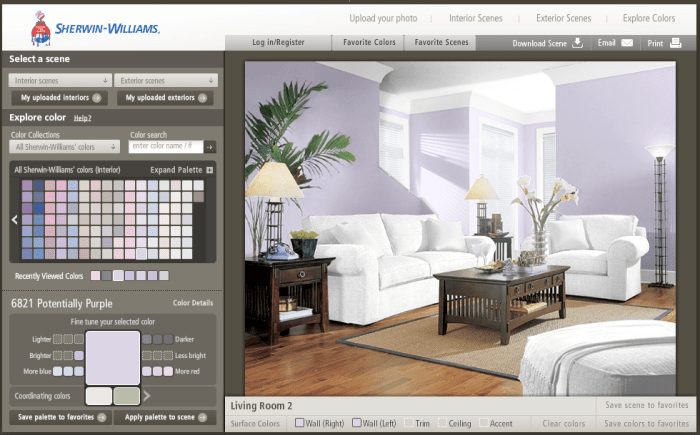Embark on a journey to transform your space with our guide on How to Paint a Room: 7 Steps for a Professional Finish. Discover the secrets to achieving a flawless paint job that will leave your room looking professionally done.
Uncover the step-by-step process that will elevate your painting skills and give your room a fresh, polished look.
Preparation Steps

Before you start painting a room, it’s essential to gather the necessary tools and materials and properly prep the area for a professional finish.
Tools and Materials Needed
- Paint rollers and brushes
- Painter’s tape
- Drop cloths or plastic sheeting
- Sandpaper
- Primer
- Paint
- Paint tray
Importance of Prepping the Room
Properly prepping the room before painting ensures a smooth and flawless finish. It helps in achieving better paint adhesion, prevents paint bleed, and protects surfaces from damage.
Cleaning and Clearing the Room
- Remove furniture, fixtures, and decorations from the room.
- Clean the walls and surfaces to be painted to remove dust, dirt, and grease.
- Fill any holes or cracks with spackling compound and sand smooth.
Protecting Floors, Furniture, and Fixtures
- Use drop cloths or plastic sheeting to cover floors and furniture.
- Secure painter’s tape around edges and fixtures to prevent accidental paint splatters.
- Remove outlet covers and light switch plates to avoid painting over them.
Surface Preparation

Proper surface preparation is essential to achieve a professional finish when painting a room. It helps the paint adhere better, ensures a smoother application, and improves the overall durability of the paint job.
Filling Cracks, Holes, and Gaps
Before painting, inspect the walls for any cracks, holes, or gaps that need to be filled. Use a quality spackling compound to fill in these imperfections. Apply the compound with a putty knife, smoothing it out evenly until the surface is level with the wall.
Sanding Surfaces
After filling in any imperfections, it’s important to sand the surfaces to create a smooth finish. Use a fine-grit sandpaper to gently sand down the spackled areas and any rough patches on the walls. This will ensure a seamless transition between the repaired areas and the rest of the wall.
Priming Walls
Priming the walls before painting is crucial for a professional finish. Primer helps to seal the surface, provides better adhesion for the paint, and can even out the surface for a more uniform appearance. Choose a high-quality primer that is suitable for the type of paint you will be using.
Painting Techniques

When it comes to painting a room, using the right techniques can make a significant difference in the final result. From choosing the correct paint finish to mastering cutting in and using a roller efficiently, here are the key painting techniques you need to know.
Types of Paint Finishes and Their Uses
- Flat: Ideal for ceilings and low-traffic areas as it helps to hide imperfections.
- Eggshell: Offers a slight sheen and is perfect for walls in living rooms and bedrooms.
- Satin: Provides a smooth finish and is easy to clean, suitable for high-traffic areas like hallways and kitchens.
- Semi-gloss: Highly durable and perfect for trim, doors, and cabinets.
Cutting In at Corners and Edges
- Use a high-quality angled brush to cut in at corners and edges before rolling the walls.
- Start by loading the brush with paint and then carefully draw a straight line along the corner or edge.
- Take your time and work slowly to ensure clean lines and avoid getting paint on adjacent surfaces.
Using a Roller for Painting Large Areas Efficiently
- Choose the right roller cover based on the type of paint and texture of your walls.
- Dip the roller into the paint tray and roll it back and forth to evenly distribute the paint.
- Start from the top of the wall and work your way down in sections, slightly overlapping each pass for a seamless finish.
Achieving a Professional Finish
- Ensure proper prep work, including cleaning the walls and repairing any imperfections before painting.
- Work in small sections to maintain a wet edge and prevent lap marks.
- Use long, smooth strokes when painting to achieve even coverage and minimize brush marks.
- Remove painter’s tape carefully once the paint is dry to reveal clean lines and a polished finish.
End of Discussion

Elevate your painting game and create a masterpiece with the expert tips provided in How to Paint a Room: 7 Steps for a Professional Finish. Transform your space into a work of art with these simple yet effective techniques.